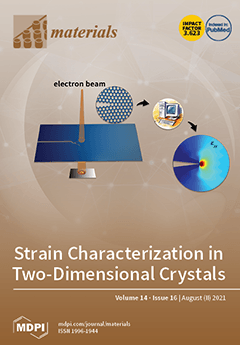Food contamination due to metal corrosion and the consequent leakage of metals into foods is a problem. Understanding the mechanism(s) of metal corrosion in food media is vital to evaluating, mitigating, and predicting contamination levels. Fruit juices have been employed as model corrosive media to study the corrosion behaviour of metallic material in food media. Carbon steel corrosion in fresh juices of tomato, orange, pineapple, and lemon, as well as dilute hydrochloric acid solutions at varied pH, was studied using scanning electron microscopy, gravimetric and spectrophotometric techniques, and comparisons made between the corrosivity of these juices and mineral acids of comparable pH. The corrosion of carbon steel in fruit juices and HCl solutions manifests as a combination of uniform and pitting corrosion. Gravimetric data acquired after one hour of immersion at ambient temperature (22 °C) indicated corrosion rates of 0.86 mm yr
−1 in tomato juice (pH ≈ 4.24), 1.81 mm yr
−1 in pineapple juice (pH ≈ 3.94), 1.52 mm yr
−1 in orange juice (pH ≈ 3.58), and 2.89 mm yr
−1 in lemon juice (pH ≈ 2.22), compared to 2.19 mm yr
−1 in 10
−2 M HCl (pH ≈ 2.04), 0.38 mm yr
−1 in 10
−3 M HCl (pH ≈ 2.95), 0.17 mm yr
−1 in 10
−4 M HCl (pH ≈ 3.95), and 0.04 mm yr
−1 in 10
−5 M HCl (pH ≈ 4.98). The correlation of gravimetrically acquired corrosion data with post-exposure spectrophotometric analysis of fruit juices enabled de-convolution of iron contamination rates from carbon steel corrosion rates in fruit juices. Elemental iron contamination after 50 h of exposure to steel samples was much less than the values predicted from corrosion data (≈40%, 4.02%, 8.37%, and 9.55% for tomato, pineapple, orange, and lemon juices, respectively, relative to expected values from corrosion (weight loss) data). Tomato juice (pH ≈ 4.24) was the least corrosive to carbon steel compared to orange juice (pH ≈ 3.58) and pineapple juice (pH ≈ 3.94). The results confirm that though the fruit juices are acidic, they are generally much less corrosive to carbon steel compared to hydrochloric acid solutions of comparable pH. Differences in the corrosion behaviour of carbon steel in the juices and in the different mineral acid solutions are attributed to differences in the compositions and pH of the test media, the nature of the corrosion products formed, and their dissolution kinetics in the respective media. The observation of corrosion products (iron oxide/hydroxide) in some of the fruit juices (tomato, pineapple, and lemon juices) in the form of apparently hollow microspheres indicates the feasibility of using fruit juices and related wastes as “green solutions” for the room-temperature and hydrothermal synthesis of metal oxide/hydroxide particles.
Full article






